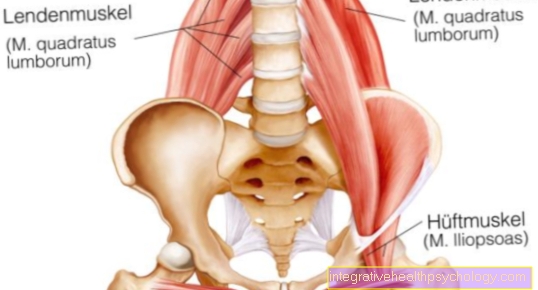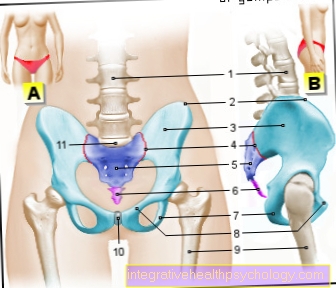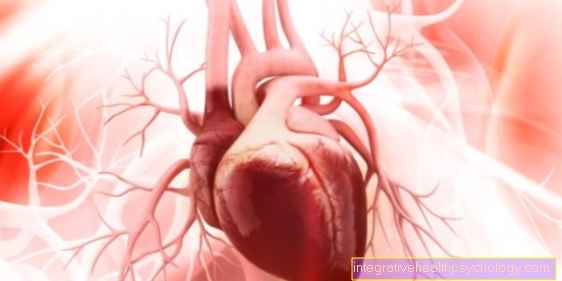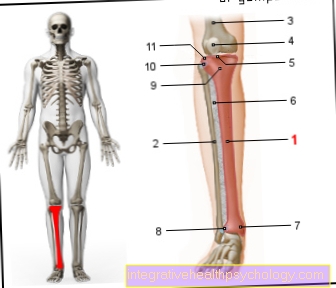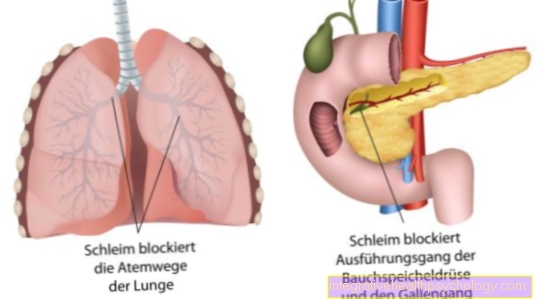Pus in the eye
definition
A pus pimple in the eye is when bacteria accumulate pus in one eye. This pus pimple can develop on the inside of the eyelid or on the edge of the eyelid. A pus pimple in the eye is basically an inflammation of the sebum and sweat glands that occur. The inflammatory processes can lead to swelling of the affected eye. Pus pimples in the eye are also known as stye. This is a bacterial inflammation. This is contagious. This means that it is possible to infect others with it as well as to infect your own unaffected eye. Children and people with weakened immune systems are most commonly affected. Often times, people who suffer from diabetes are also at a higher risk of getting stye.
Also read our article on the topic: Stye

Causes of pus pimples in the eye
Bacteria cause the pus pimples in the eye. Causes for the entry of bacteria into the eye are often dust, drafts, genetic factors, dirt, existing inflammation on the edge of the eyelid, a weakened immune system or dry eyes. Dry eyes can develop as a result of dry heating air, cold and reduced blinking, for example with increased PC work. This means that a restricted build-up and drainage of the tear film can cause a build-up of secretion in the eyelid glands. This can lead to inflammation. Bacteria are involved in this. Skin germs such as staphylococcus aureus or other staphylococci are often the culprits. More rarely, it is streptococci that cause the pus pimple to develop in the eye. The bacteria can also get into the eyes through dirt on the fingers. This can often be the case with children. However, dirt and dust are usually not the only cause, but in combination with a weakened immune system, the risk of developing a stye is much higher. The immune system can be weakened in any age group due to various causes. Previous infections, hormonal changes and physical and / or psychological stress can temporarily lower the body's own defenses and promote the development of stye.
Symptoms of a pus in the eye
The pus in the eye is usually initially visible as a reddish lump on the outside or inside. The patients complain of severe pain. The swelling can vary in severity. This can create an enormous feeling of tension. When the pus pimple bursts, pus oozes out. After that, the symptoms usually subside without any problems. If this doesn't happen, the pain will persist. An eyelid abscess can develop. A general feeling of illness and headaches can also occur. If a fever develops, it is a sign that the bacteria have entered the bloodstream. This creates the risk of blood poisoning. As soon as a fever occurs, it is imperative to see a doctor. The signs of inflammation can spread to the whole eye. The other eye can also be infected. The conjunctiva and the eye socket itself can become inflamed. This can lead to impaired vision and irreversible damage to the visual system. With proper treatment and measures, however, these and other complications can be avoided.
The diagnosis of a pus pimple
If a pus pimple occurs in the eye more frequently or if you are unsure of the diagnosis and / or treatment, you should see a doctor. The doctor first asks the patient. A pus on the eye is often a visual diagnosis. The inside and outside of the eyelids and the surrounding structures are carefully examined. If pus is already emerging, a smear can be taken. If there is evidence of an immune deficiency or diabetes in the previous history, appropriate further examinations will be carried out.
Therapy for a pus in the eye
If hygiene measures are observed and the immune system is stable, pus pimples in the eye are harmless. Often times, they heal without drug treatment. Some sufferers use home remedies to aid the healing process. In the acute stage, the use of heat is helpful. Warmth ensures that the pus breaks out faster and the symptoms can subside. Warm, dry compresses can be soothing. The use of a red lamp can also promote the healing process. Instead, moist compresses, whether with warm water or chamomile tea, can achieve the opposite. The moisture can spread the bacteria further. In some cases, however, antibiotic treatment is required. Here antibiotic eye drops or ointments come into question. They serve to ensure that the inflammation does not spread to other eyelid glands. If the pus does not drain away on its own, the doctor can make a small incision for relief. This procedure is usually uncomplicated and can be carried out on an outpatient basis.
Duration
Usually, a pus pimple in the eye takes a week to heal. The healing process can be delayed in children or people with weakened immune systems. In addition, non-compliance with the hygiene measures leads to a longer recovery time.
Localization of a pus pimple in and on the eye
Pus in the inner eyelid
Pimples that develop in the inner eyelid are called inner stye. In technical jargon one speaks of Hordeolum internum. This is an acute inflammation of the meibomian glands. The meibomian glands are sebum glands on the edge of the eyelid. These glands of the eyelid are located deeper in the eyelid. The job of the meibomian glands is to produce an oily secretion. This secretion makes up only 1% of the tear fluid, but it plays a decisive role in this. The secretion of the meibomian glands ensures a stable tear film. If the meibomian glands are inflamed, they can no longer adequately perform this task either. Dry eyes can develop. These in turn encourage inflammation of the glands. The pus pimples in the inner eyelid can be persistent and extremely disturbing. The pus is emptied inside the eyelid. The pus pimples in the inner eyelid are usually caused by a local bacterial infection, as already described above. If dry eyes and / or internal styes occur, a meibography may be performed. This is a method of visualizing the meibomian glands. Meibography is an infrared image.
You can find more interesting information at: Eyelid inflammation
Pus in the corner of the eye
Pus pimples that arise in the corner of the eye, i.e. on the outside of the eyelid, are referred to as outer barley grains. In technical terminology, these are called hordeolum externum. There is inflammation of the Zeis or Moll glands. The minor glands are sweat glands in the area of the eyelid. The minor glands are also known as the eyelash glands because they are located there. Your tasks are not yet sufficiently understood. They are known to synthesize antimicrobial peptides. Therefore one suspects a connection to the body's own defense of the surface of the eye. The Zeis glands are sebum glands in the area of the eyelid that are located in a different place than the meibomian glands. Like the minor glands, they are located on the hair follicles of the eyelashes. They produce lipids, also known as sebum. In the case of an external stye, the pus collection breaks through to the outside. The risk of recurring barley grains can be increased by a weakened immune system and diabetes, as well as by using cosmetics in the eye area or by wearing contact lenses.
Read our article on this: Eyelid inflammation




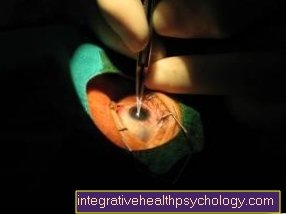




.jpg)

